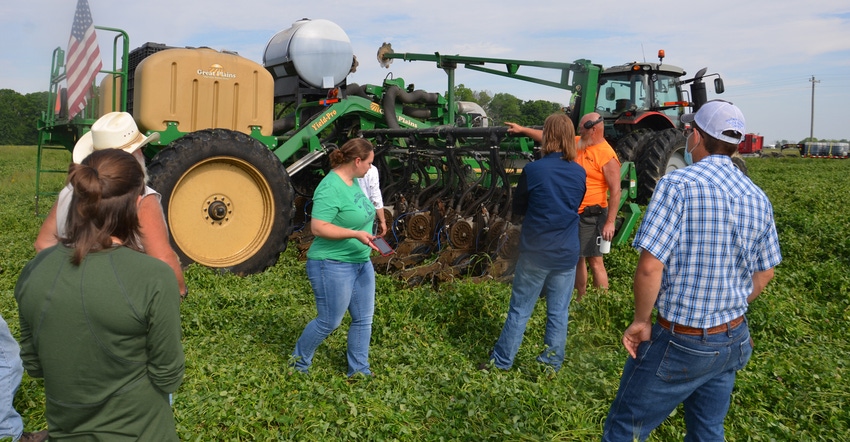
If you’re going to “plant green” into living cover crops, then you likely will equip your planter differently than someone who is planting conventionally or no-tilling into soybean stubble. However, agronomists say your goal should remain the same: doing whatever it takes to ensure the best seed placement and, ultimately, the most uniform, evenly spaced stands as possible.
Roger Wenning, Greensburg, Ind., and his son Nick have no-tilled successfully into living cover crops for several seasons. In 2021, they invited Stephanie McLain, Indiana’s state soil health specialist with the Natural Resources Conservation Service, and other conservation personnel to visit when they planted corn green into a field where McLain and other soil scientists are conducting basic studies on how soil changes over time in no-till systems. Those who attended the ad hoc field day included other NRCS staff, plus soil and water conservation district employees and Indiana State Department of Agriculture soil conservation specialists.
The goal was to give those who get questions about such things as planting into live cover crops a firsthand look at it, McLain explains. She notes that practical, hands-on training in a real farm field helps conservation staff better understand challenges and situations that can arise day to day at planting.
Fine-tuning crop stands
“We’ve been happy with our stands in general, planting green with our Great Plains planter equipped for this situation,” Roger says. They typically plant corn at rates in the low 40,000-seeds-per-acre range with a 12-row, twin-row planter. Rows are paired as twin rows 8 inches apart.
To tweak stands last season, they decided to try mowing thick, live cover with a rotary mower just ahead of planting.
“We’ve had good success for the most part, but we thought the planter might flow through things better in damp conditions if we mowed first,” Nick explains. “It was just something we wanted to try.”
To test the idea, they mowed multiple strips across the field and left other strips undisturbed.
McLain is thankful the Wennings not only invited conservation staff to watch the planter in action, but also took a few minutes to explain what they were trying to accomplish at planting. When she checked back after harvest, she learned that the field averaged well over 200 bushels per acre, despite consisting of mostly wet soils in a year with several wet stretches. The field was aided by a well-functioning, patterned tile system.
One key to success is obtaining a good, uniform, evenly spaced stand, Roger says. That sets the tone for the rest of the season.
About the Author(s)
You May Also Like




